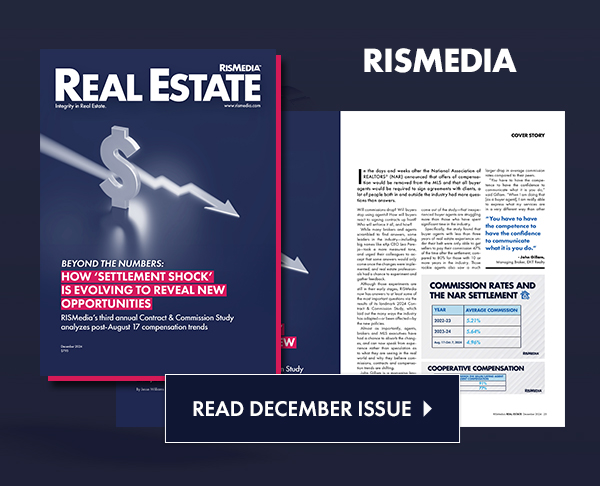Foreign buyers purchased $42 billion worth of U.S. existing homes from April 2023 through March 2024, retreating 21.2% from the prior 12-month period, according to a new report from the National Association of REALTORS® (NAR). International buyers purchased 54,300 properties, down 36% from the previous year—the fewest number of homes bought since 2009 when NAR began tracking the data.
For comparison, overall existing-home sales were down 18.7% in 2023 compared to the previous year.
“The strong U.S. dollar makes international travel cheaper for Americans, but makes U.S. homes much more expensive for foreigners,” said NAR Chief Economist Lawrence Yun. “Therefore, it’s not surprising to see a pullback in U.S. home sales from foreign buyers.”
Foreign buyers who resided in the U.S. as recent immigrants or who were holding visas that allowed them to live in the U.S. purchased $22.6 billion worth of U.S. existing homes, a 3.4% decline from the previous year—representing 54% of the dollar volume of purchases. Foreign buyers who lived abroad purchased $19.4 billion worth of existing homes, down 35% from the 12 months prior, accounting for 46% of the dollar volume. International buyers accounted for 2% of the $2.1 trillion in total U.S. existing-home sales during that period.
“Historically low housing inventory and escalating prices remain significant factors in constraining home sales for American and international buyers alike,” Yun added.
The decrease in foreign buyers also comes as several states seek to restrict property purchases by residents of certain countries, with some housing advocates condemning the proposals as discriminatory.
The average ($780,300) and median ($475,000) existing-home sales prices among international buyers were the highest ever recorded by NAR, and 21.9% and 19.8% higher, respectively, than the prior year. The increase in prices for foreign buyers reflected the overall price increase for all U.S. existing homes, which climbed to $392,600. At $1.3 million, Chinese buyers had the highest average purchase price, with 25% purchasing property in California. In total, 18% of international buyers purchased properties worth more than $1 million from April 2023 to March 2024.
Canada led all countries of origin in the share of foreign buyer purchases of U.S. existing homes at 13%, followed by China and Mexico (11% each), and India (10%).
China was first in U.S. residential sales dollar volume at $7.5 billion, continuing a trend going back to 2013, despite residents of this country being targeted by the aforementioned property restrictions. Canada ($5.9 billion), India ($4.1 billion), Mexico ($2.8 billion) and Colombia ($0.7 billion) rounded out the top five.
For the 16th consecutive year, Florida remained the top destination for foreign buyers, accounting for 20% of all international purchases. Texas (13%) and California (11%) were second and third, respectively, followed by Arizona (5%), Georgia, New Jersey, New York and North Carolina (4% each).
All-cash sales accounted for half of international buyer transactions compared to 28% of all existing-home buyers. Non-resident foreign buyers (68%) were more likely to make an all-cash purchase than resident foreign buyers (36%). More than two-thirds of Canadian (69%) and Chinese (68%) buyers made all-cash purchases, the highest shares among the top foreign buyer nations.
“Fostering economic investment in culturally dynamic communities, businesses and industries is a top priority for NAR,” said Alex Escudero, NAR’s director of global strategy. “Our work provides members and their communities with tools, resources and data to identify and highlight international investment opportunities in U.S. real estate. This supports local communities to drive economic development in markets across the country.”
Behind the numbers
RISMedia spoke with Matt Christopherson, NAR’s director of business and consumer research, to get a more precise picture of what the numbers, prices and percentages mean. He started by saying elevated mortgage rates and tight inventory, which are the main reasons sales to Americans have been low over the past year or so, are the same reasons international sales have flagged.
“There’s clearly a lot of pent-up demand among foreign buyers,” he said. “They’re being held back for the same two reasons as domestic buyers. So changes in either of those would bring them back, but then they’d be competing against pent-up domestic demand as well.”
Christopherson noted that 80% of foreign buyers are individuals, not corporations, and that the majority of foreign buyers purchase properties as rentals or vacation homes, with about 45% buying as a primary residence. And one plus for many foreign buyers is the ability to pay all cash.
“So they’re able to avoid high mortgage rates and also more easily win a bidding battle by offering all cash,” he said.
Amplifying Yun’s comment on how the strength of the U.S. dollar affects international sales, Christopherson said that “depreciation of different currencies has made it tougher for certain buyers because the dollar has remained very strong. So it’s great for us as Americans, but it requires even more of their currency to purchase here. And the Chinese yuan had the highest depreciation against the dollar.”
International buyers may have to pay a lot, but they do get bang for their buck, as home appreciation in the U.S. is and always has been solid.
“They get a lot more for their money when they purchase here compared to some of the cities that they’re coming from,” said Christopherson. “We’ve been seeing huge increases in home values here, so they get more for their money for the initial investment, and it’s also proven to be a strong investment growth-wise as well.”
So how do new owners handle their properties if they buy them as investments with no plans to move to the U.S.?
“We don’t have the data on specifically how they manage the property, but it’s likely for them to be hiring a REALTOR®, a property manager, a professional to manage that property,” explained Christopherson. “The Chinese are actually not the (largest group of) people buying rentals. Colombian buyers, more than two thirds of them, are purchasing properties to be revenue rentals. They’re able to set up rentals and provide an income source.”
Christopherson finally said that Americans should not be worried that foreign buyers will present much of a threat when they are in the market to buy a home.
“For some people, there is a worry of foreign buyers taking away homes that others here could be getting into, but it’s less than 2% of overall home sales,” he said. “It should be looked at as a business opportunity and not necessarily a threat. And they’re purchasing at a higher price point than the U.S. buyer, so they’re not exactly competing against first-time homebuyers.”












